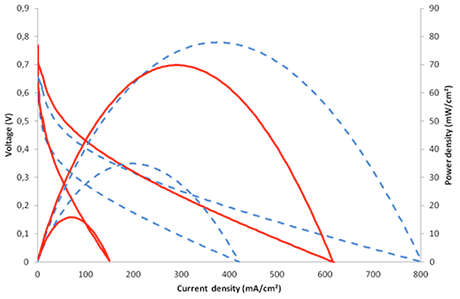High Temperature PEM Fuel Cells and Organic Fuels
The aim of the project is to develop a High Temperature Proton Exchange Membrane Fuel Cell (HT-PEMFC) that can be run on dimethyl ether (DME) or methanol as fuel. Catalyst synthesis and characterization, electrode and Membrane Electrode Assembly (MEA) manufacturing together with cell testing are some of the activities in the project.
Direct DME operation requires additional water to be supplied to the anode side in the fuel feed. In traditional Nafion-based low temperature PEM fuel cells, which rely on liquid water for proton conductivity and thus operate at 80-90 °C, DME is fed as an aqueous solution. Unlike many other small organic compounds, DME has very low solubility in water, making it unsuitable for direct fuelling of the cell. Using HT-PEMFC it is possible to feed the cell with DME and steam mixture, completely avoiding the miscibility problem.
A Pt-Ru/C catalyst is usually used on the anode and Pt/C on cathode side. The catalyst is applied on carbon paper by spraying. An optimization of ink composition and spray parameters has been performed to obtain better fuel cell performance.
The cells are run in a test station specifically built for the purpose. Fuel cell testing involves i-V curves using different fuels to see the total performance, combined with Electrochemical Impedance Spectroscopy (EIS) to shed light on the ongoing processes in different parts of the MEA.

Performance curves of a single cell vapor fed with DME (full lines) and methanol (dashed lines) at 150 °C (lower) or 200 °C (upper), ambient pressure and air as oxidant.
The project is part of the VETEK consortium, funded by Danish Agency for science and Innovation
For further info about the project see DTU Orbit